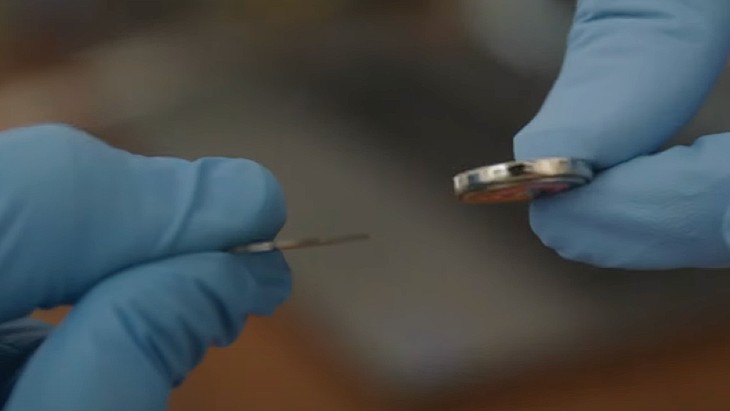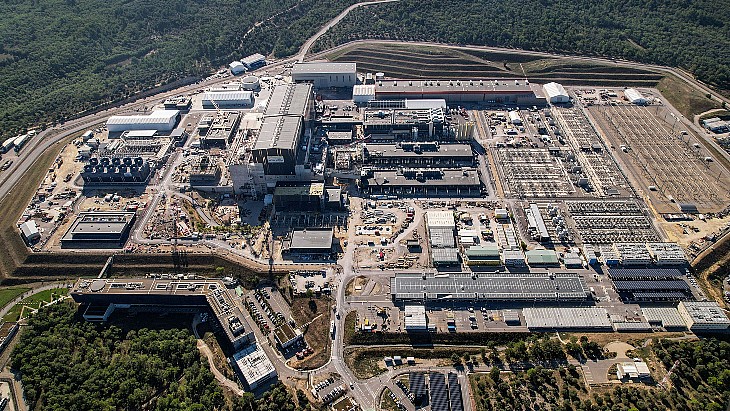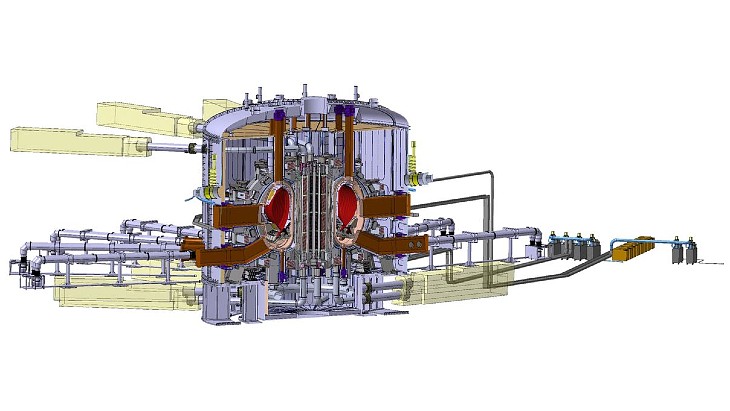North American investments in fusion energy
.jpg)
The financing provided by CNL - Canada's premier nuclear science and technology organisation - and the Business Development Bank of Canada's investment arm, BDC Capital - Canada's bank for entrepreneurs - will enable General Fusion to continue advancing its innovative Magnetised Target Fusion (MTF) technology to provide clean fusion energy to the grid by the early to mid-2030s.
In addition to the lead investments, the first closing of this financing also includes investment from Hatch, a Canadian headquartered consultancy firm specialising in the mining, energy and infrastructure sectors, and other company shareholders. This financing brings the total public and private investment into General Fusion's LM26 programme to over CAD71 million since its launch in 2023.
To fast track its progress towards commercialisation, General Fusion is advancing its Lawson Machine 26 (LM26) demonstration programme in Richmond, British Columbia. This machine is designed to achieve two transformational milestones for fusion energy, temperatures of over 100 million degrees Celsius (10 keV) and scientific breakeven equivalent, using the company's MTF technology.
General Fusion's MTF approach involves injecting hydrogen plasma into a liquid metal sphere, where it is compressed and heated so that fusion occurs. The heat from the fusion of the hydrogen atoms is transferred into the liquid metal. This enables fusion conditions to be created in short pulses rather than creating a sustained reaction, which "avoids the pitfalls of other approaches that require expensive superconducting magnets or high-powered lasers," according to the company.
General Fusion plans to construct its Fusion Demonstration Plant (FDP) at the UKAEA's Culham Campus near Oxford, England. The plant will be used to prove the viability of the MTF technology and is a 70%-scaled version of the commercial pilot plant. However, the plant will not be used to produce power. The FDP will cycle one plasma pulse per day, and will use deuterium fuel, whereas the commercial pilot plant will use deuterium-tritium fuel and will cycle up to one plasma pulse per second. The FDP is expected to be commissioned in 2026 and fully operational by early 2027.
CNL and General Fusion have already been working together to advance the design of General Fusion's power plant. That work has included analysis by CNL of tritium breeding technologies and tritium management facilities. Tritium is a primary component of fusion fuel. More recently, the teams collaborated on research related to the fusion machine, balance of plant, and power conversion system for General Fusion's MTF machine design.
CNL President and CEO Jack Craig said: "CNL and General Fusion share the same vision - to unlock fusion's tremendous potential as a transformative, clean energy future in Canada in order to fight climate change and maintain our energy security. We are proud to invest in such an innovative Canadian company, applying our unique capabilities and expertise within Canada's national nuclear laboratory to help bring their technology to life, and secure these environmental and economic benefits to Canada."
US funding awards
The US Department of Energy (DOE) announced it has awarded USD4.6 million in 17 awards to US businesses via the Innovation Network for Fusion Energy (INFUSE) programme.
The aim of INFUSE is to accelerate fusion energy development in the private sector by reducing impediments to collaboration between business and national laboratories or universities. DOE said the "overarching objective is to ensure the nation's energy, environmental, and security needs by accelerating foundational research to advance economical, innovative fusion technologies".
Projects for this round of funding include research in materials science, modelling and simulation, as well as enabling technologies to help move toward the ultimate goal of economical fusion energy.
The 17 projects were selected via a competitive peer review process managed by the INFUSE leadership team at Oak Ridge National Laboratory and Princeton Plasma Physics Laboratory. The programme solicited proposals from the fusion industry and selected projects for one or two-year awards, all with budgets ranging between USD100,000 and USD500,000 each.
"The selections today showcase our continuing commitment to the fusion industry in the US and our goal to share widely unique capabilities at national laboratories and US universities," said DOE Associate Director of Science for Fusion Energy Sciences Jean Paul Allain. "Partnering with businesses and working together is a win-win for our fusion industry, the DOE, and the nation."
The USA has set a goal of enabling a fusion pilot plant, led by the private sector, on a decadal timescale as the country moves toward a net-zero economy by 2050.



_70828.jpg)





_66488.jpg)


